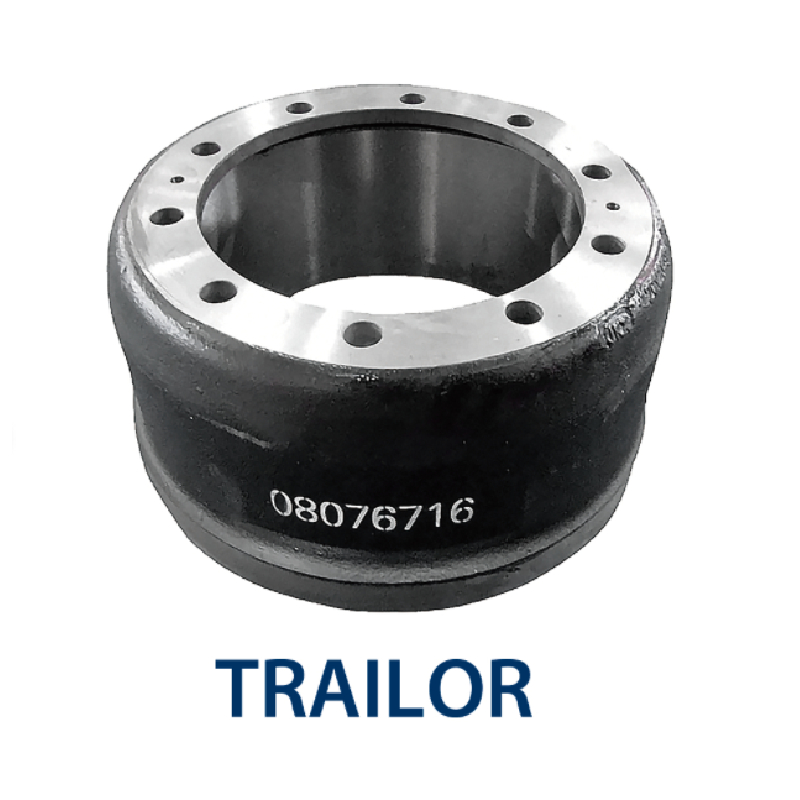Ağu . 13, 2024 20:56 Back to list
Understanding the Causes and Effects of Warp in Brake Drums for Vehicle Safety and Performance
Understanding Brake Drums and the Impact of Warping
Brake systems are crucial for the safety and performance of vehicles. Among the key components in certain braking systems are brake drums, which play a significant role in slowing down or stopping a vehicle. However, brake drums can encounter issues over time, particularly warping, which can severely affect driving safety and efficiency.
What are Brake Drums?
Brake drums are cylindrical components found in drum brake systems. They work in conjunction with brake shoes to create friction that slows the vehicle. When the brake pedal is pressed, hydraulic pressure pushes the brake shoes outward against the inner surface of the drum, generating the necessary friction to bring the vehicle to a halt.
The Causes of Brake Drum Warping
Warping occurs when the brake drum becomes unevenly deformed, often due to excessive heat generated during braking. Several factors can contribute to this condition
1. Overheating When brakes are applied frequently and for extended periods, such as during steep descents or aggressive driving, the heat generated can exceed the material's threshold, causing it to warp.
2. Poor Installation Improper installation of brake components can lead to uneven pressure distribution. If the drum is not securely fitted or if the shoes are misaligned, it can create hotspots that lead to warping.
3. Wear and Tear Over time, regular usage can cause wear on the components that might lead to misalignment. As the brake drum wears down, it may not provide a flat surface for the brake shoes, resulting in warping.
4. Environmental Factors Exposure to moisture or salt can accelerate corrosion, weakening the drum and making it more susceptible to warping.
Symptoms of Warped Brake Drums
Recognizing the signs of warped brake drums is vital for vehicle safety
. Common symptoms includecan brake drums warp

- Vibration or Pulsation When applying the brakes, drivers may notice a vibration or pulsation in the brake pedal or steering wheel, which is often indicative of warped drums.
- Uneven Braking If the vehicle pulls to one side when braking, it could be due to uneven wear or misalignment caused by warping.
- Increased Stopping Distance Warped drums reduce braking efficiency, resulting in longer stopping distances, which can be dangerous in emergency situations.
Addressing Warped Brake Drums
If warping is suspected, it’s essential to address the issue promptly. Ignoring the problem can lead to more severe brake system failures or accidents. Here are steps to take
1. Inspection A qualified mechanic should inspect the brake system regularly, looking for signs of warping or other issues with the brake components.
2. Resurfacing In some cases, the brake drum can be resurfaced to restore a flat surface. This process involves grinding down the outer surface to eliminate any imperfections.
3. Replacement If the warping is severe or the drum is too worn, replacement may be necessary. New drums can restore optimal braking performance and safety.
4. Preventative Maintenance Regular brake inspections, proper driving techniques, and ensuring correct installation can help prevent warping. Drivers should avoid excessive braking and allow the brakes to cool down during prolonged use.
Conclusion
Brake drum warping is a serious concern that can compromise vehicle safety and performance. By understanding the causes, symptoms, and solutions related to warped brake drums, drivers can take preventive measures and respond effectively to ensure their braking systems remain in optimal condition. Regular maintenance and awareness are key to safe driving.
-
Brake Drum Man - High-Quality Drum Brake Drums & Brake Shoes for Reliable Performance
NewsJun.24,2025
-
High-Quality Brake Drum Kamaz – Durable Drum Brake Drum & Brake Shoe Replacement
NewsJun.10,2025
-
High-Quality Brake Drum Liza for Drum Brake Systems - Superior Durability and Performance
NewsJun.10,2025
-
High-Quality Brake Drum Kamaz – Durable Drum Brake Drum & Brake Shoe Solutions
NewsJun.10,2025
-
Durable Kamaz Brake Drums High-Performance Truck Parts
NewsJun.09,2025
-
Premium Brake Drum Maz Kit with Shoes Enhanced Braking
NewsJun.09,2025
